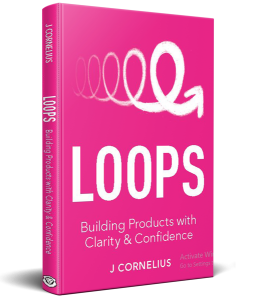There are two ways to build a product. Either you start with a solution in mind and launch it to the market or you start with a group of people with a problem and then solve it for them.
The latter approach uses market/product –fit as J Cornelius flips the regular expression to emphasize the importance of focusing on actual needs in the market. Problem solving venturing is the older way of doing things prior the Internet-age but it takes some adjusting and convincing to switch to the problem-seeking way of starting companies.
Loops is about the iterative processes of human-centered business design where you turn ideas into reality with a systematic approach.
After having an idea it’s good to validate whether it’s actually something that is inevitable, solvable, recognisable and verifiable. An idea is just a hunch before it is validated with actual market research and responses.
First you have to understand the needs, wants and fears of your customers.
Successful products have found the right balance and excellence between customer centricity, product quality and operational efficiency with the respective attributes of responsiveness, differentiation and competence. Usually mastering all of them makes you the category leader and the biggest revenue generator in the industry.
The problem discovery process starts with a problem safari. You hunt the market for information by any means necessary and continue by building a research framework. The usual persona creation can be replaced by using actors (who are they) and roles (what group they belong in) based on perceived user pain points.
It takes empathy to recognise and map users thoughts, pains and gains to visualise the problem area. Understanding users decision making require often in person interviews in order to get the psychographics and demographics right.
Prototyping is to validate your approach to solving the market need in a right way and not to green light your urge to build a certain solution. Therefore the focus is on solution design instead of product design. The process can start from user journey map and continue in creating wireframes, paper prototypes and finally by building digital prototypes.
The process goes in loops and you refine the prototype till it starts to resemble in detail the actual final end product based on testing and user feedback. A hypothesis canvas helps to structure assumptions and hypothesis with experiments and results to validate your hunches.
The final stages of Loops are building a brand and products with speed and scale. Branding is needed for consistency and it cannot be established without the understanding gained in the prior stages.
The best minimum viable products are not just viable but they capture already aspects of the full product: useful, usable and delightful. A better way to describe MVP would be to call it a minimum delightful product in order not to forget that products should be fun and enjoyable, too?
Loops is a practical guide to discover problems worth solving and building your product in steps. The iterative process uses common tested lean and agile tools which should make it easy to start looping in no time.

